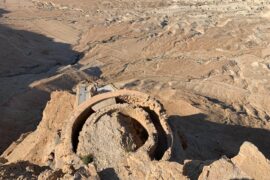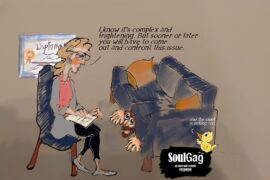A surface understanding of Megillat Esther can be dangerous. At first glance, it appears we’re being told that it’s acceptable to live in exile from our land, even when the opportunity to return home exists. It appears we’re being told that if we’re anyway living on foreign soil, it should be a political aspiration of our community to gain proximity to power – no matter how immoral or unjust that power structure is.
Aḥashverosh is not a good man. We see this early on when he murders his wife for refusing his drunken demand to dance for his guests. Our sages actually teach that this entire party at the opening of the Megilla was in celebration of Aḥashverosh believing his kingdom to be secure as a result of its Jews not returning home to Judea.
As head of the empire ruling over Eretz Yisrael, it was Aḥashverosh who had halted the rebuilding of the Jerusalem Temple. He was also complicit in Haman’s genocidal attempt to annihilate the Jewish people. The Talmud states that when Esther accused Haman of being a persecutor and an enemy, her finger was actually pointing at Aḥashverosh (Megilla 16a). The Maharal of Prague quotes this in his Gur Aryeh commentary on Metzora, explaining that Esther pointed at the king because she knew him to be responsible and sought to avoid dishonesty.
Amalekites like Haman are only able to thrive in corrupt systems. The Shoah is perhaps the clearest example of this. Nazi Germany could never have carried out its program to exterminate the Jewish people had the bourgeoisie not initially supported Hitler’s rise and had the United States and its allies not been at least passively complicit in the Nazi Final Solution.
So while it’s easy to call out Amalekites, it’s far more challenging to recognize the broader systems that enable them to gain power and advance their schemes.
As the all-powerful emperor whose word becomes law, Aḥashverosh should be seen as more than just a man. He’s also a system. Like the modern capitalist system, Aḥashverosh is unstable. He drinks too much and his mood tends to swing. He has all the destructive power of a “free market” but he’s not uncontrollable. Those with access to power are able to manipulate Aḥashverosh and direct him towards policies that benefit them – similar to how the ruling class and major corporations influence not only the market but also the politicians whose campaigns they finance.
One of the reasons presented in the Talmud (Megilla 14a) for Israel not reciting Hallel on Purim is that Hallel begins by calling the Jewish people “servants of HaShem” yet we can’t be servants of HaShem while we’re still servants to Aḥashverosh. Truly serving HaShem requires freedom.
The Megilla doesn’t end with the liberation of the Jewish people or the destruction of a malevolent system. Rather than kill Aḥashverosh and initiate a mass return of Jews to Judea, Mordekhai replaces Haman as the emperors’s prime minister. The Jews are granted royal permission to fight back and successfully kill tens of thousands without losing a single fighter but all this takes place within the context of an unjust system left intact.
With ancient Israel boasting thousands of prophets, only those prophesies relevant to future generations became canonized as part of the TaNaKh. The decision to include Megillat Esther was controversial, likely due to the messages it appears to promote at first glance. But the scroll was ultimately included due to its deep lessons for us today.
When we examine the story of the Megilla through the writings of our sages, we see that the Jews of Persia evoked Divine judgement for their participation in a party meant to celebrate their inclusion in an unjust foreign society. We further see that Esther’s situation as queen to Aḥashverosh was actually far from desirable but really an act of tremendous sacrifice on behalf of her people. We also learn that Mordekhai was highly critical of the comfortable Diaspora lives many Jews were leading, and therefore began to intentionally antagonize Haman in order to disrupt those lives.
But another message worth suggesting is that the Jewish leadership of Shushan missed the point. The objective shouldn’t have been greater proximity to power – to replace Haman with Mordekhai as Aḥashverosh’s prime minister – but rather the dismantling of an unjust system and a mass return to Judea.
Had those goals been achieved, perhaps we would be including Hallel in our commemoration of Purim each year.





